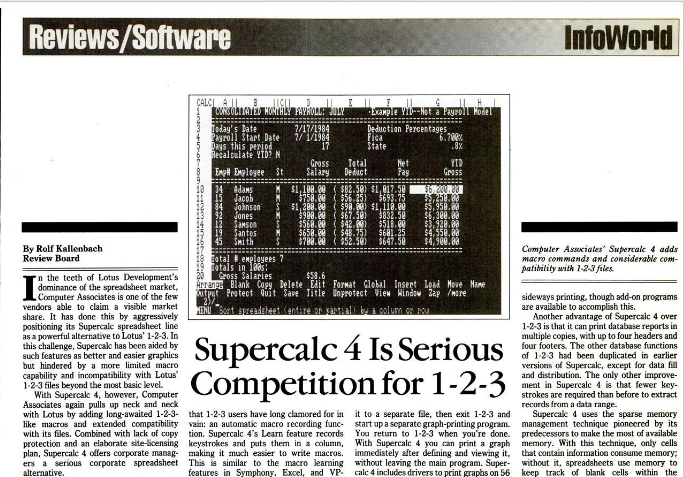Think about a world without Excel. That's just impossible for me.
Those words were spoken by Microsoft boss Satya Nadella at the Aspen Ideas Festival in 2016, but it is a sentiment shared, I suspect, by most people reading this article.
We may have survived the Y2K panic 24 years ago, but how would we react if we heard that VLOOKUP was about to stop working?
The number of active Excel users is impossible to measure, mainly due to how Excel is bundled with other Microsoft products, but there is little doubt that it would be in the hundreds of millions. No wonder Nadella has called it the best consumer product the company ever made.
Spreadsheets, An Origin Story
The terms “Excel” and “Spreadsheet” are virtually synonymous now, so it would be understandable if a yourger reader assumed Microsoft invented the spreadsheet, but that’s far from the case. Just a few key milestones:
- 1906 is the first known accounting use of the term “spread sheet”, referring to a grid of columns and rows in a ledger. (Humans had been organizing data into tables for thousands of years before that.)
- 1969 saw the development of LANPAR, a catchy acronym for “LANguage for Programming Arrays at Random”. This was credited as being the first electronic spreadsheet on mainframe and time-sharing computers.
- 1979 heralded the arrival of VisiCalc, developed for the Apple II by VisiCorp staff Dan Bricklin and Bob Frankston. It is credited with transforming the personal computer from a hobby for computer enthusiasts into a business tool.
- 1980 saw SuperCalc* launched by Sorcim to fill a gap in the market for CP/M computers not compatible with VisiCalc. Alongside WordStar, it was bundled with the Osborne 1 portable computer, quickly became popular, and was ported to MS-DOS in 1982.
- 1982 also marked the introduction of Lotus 1-2-3, which was developed for IBM PC DOS and became the leading spreadsheet until…
- 1985 introduced us to Microsoft Excel, on September 30 to be precise. It was initially developed for the Apple Macintosh before being ported to Windows.
It took Excel until 1995 to overtake Lotus 1-2-3 and become the market leader. IBM eventually pulled the plug on the latter in 2013, allowing Excel to rule the spreadsheet world.
*Some of our readers might recall, or be interested to learn, that Sorcim sold SuperCalc in 1985 to Computer Associates, who were also the owners of ACCPAC before it was sold to Sage and reborn as Sage 300. SuperCalc was in the Premier League of spreadsheets for several years, as demonstrated by this InfoWorld article from around 1986:

Excel-lence in Stickiness
Accountancy and Business Intelligence tools have evolved beyond recognition in recent years, let alone decades. The buzz these days is about cloud-native, collaborative, AI-enhanced applications with sophisticated, visually appealing graphics. Often, their sales pitch will include warnings about the limitations of Excel, and the dangers of relying on it.
Despite this, Excel refuses to die. It’s extremely rare for a mass-market software product to not just survive, but thrive, for multiple decades in (more or less) its original form.
What’s the secret? In a few words, it might be a combination of familiarity, simplicity, flexibility, and ubiquity.
Few serious accountants are likely to rely solely on Excel, but many, perhaps most, will still use it as a complementary tool.
For closing arguments in the case for the defence, I turned to Anne Walsh of Ireland, a freelance Excel trainer since 1997 who refers to herself as “The Excel Lady”, and this article of hers, published in Irish Tech News. Sure, it’s from 2017, but when it comes to Microsoft Excel, we’ve learned that not much changes in 7 years! To give Anne the last word:
Like “the love that dare not speak its name”, the vast majority of users in the business world use Excel, and practically every system has a button that says “Give it to me in Excel”.
Did you know you can Excel with Orchid?
If an ongoing relationship with Excel is one of your guilty secrets, and you are also a Sage 300 user, we’re here to help.
Orchid’s Optional Tables for Sage 300 includes a Spreadsheet Add-in that is particularly useful for forecasting and budgeting. It lets you:
- Extract data from the Sage 300 database into Microsoft Excel
- Use the familiar Excel functions to format, modify, and manipulate the data
- Write the revised data directly back to your custom Optional Tables in Sage 300

